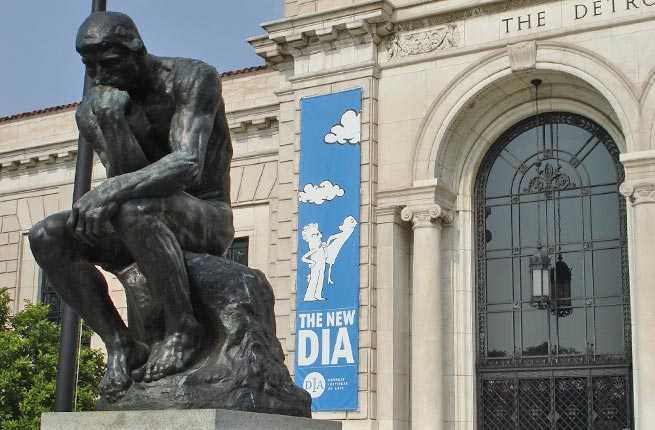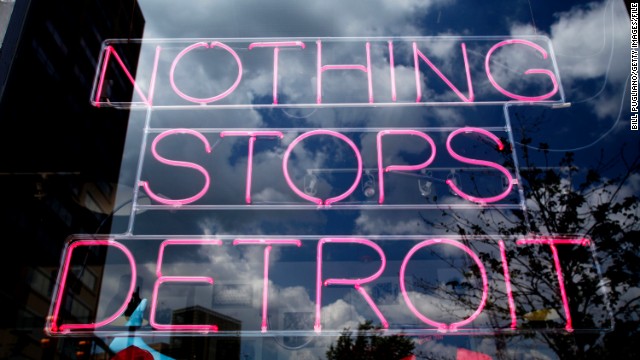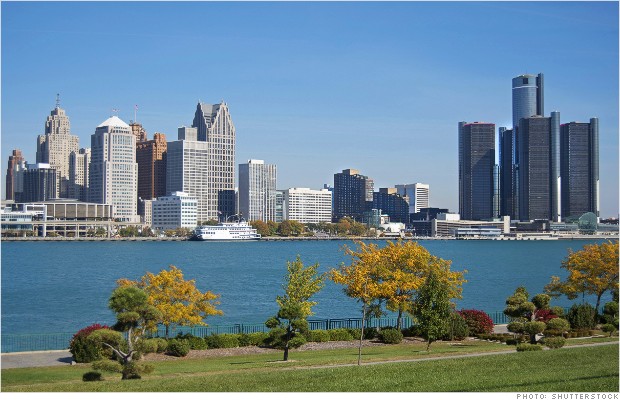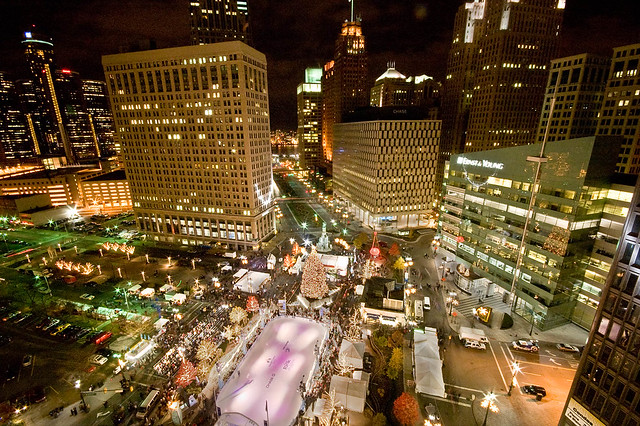 Midtown Detroit Inc.
Midtown Detroit Inc. (MDI) President Sue Mosey accepted the Urban Land Institute's (ULI) Global Award for Excellence at ULI's Fall Meeting in Chicago on Friday morning on behalf of her organization and its partners. This year marks Mosey's 25th year as Midtown development leader.
Widely recognized as the real estate industry's most prestigious honor, the award recognizes superior development efforts that go beyond good design, including leadership, community contribution, public/private partnerships and financial success. MDI joins six other Michigan-based projects that have won the prestigious award.
"ULI's recognition of Midtown is an important milestone in the district's development," said Sue Mosey, President of Midtown Detroit Inc. "This award represents a strong counter point to the national narrative that has focused on Detroit's challenges."
The award honors six development projects development projects, master plans and initiatives that have been spearheaded by Midtown Detroit Inc. and its partners. The winning submission recognizes the Woodward Garden Block development, the Sugar Hill Art District, The Ellington & Detroit Whole Foods Market, the Auburn, the Green Garage and the TechTown District Plan – which will begin implementation in 2014 with support from a grant from the Knight Foundation.
$122.5-million of investment is represented in the six projects that were part of the winning submission – 3.3-billion of public and private investment has been made in the Midtown District over the last decade. Twenty-four new businesses have opened in the past year with nearly a dozen more in the pipeline. Over the past three-years Midtown has sustained a 96% residential occupancy rate.
Partnership programs such as the Living Cities Integration Initiative and the Midtown Anchor Strategy forged with philanthropy and the district's higher education and healthcare institutions were key to Midtown's winning entry.
"Midtown Detroit Inc. has helped redirect the trajectory of Detroit's reimagination," said Rip Rapson, president of the Troy, Michigan-based Kresge Foundation, a long-time supporter of Midtown Detroit Inc. "It has been formative in transforming a significant geography in the heart of Detroit into the kind of dense, vibrant and diverse neighborhood that is essential to Detroit's renewed stability, health and growth. Its successes have not only altered Detroit's approach to urban development, but also hold the promise of informing the practices of countless other cities throughout the country."
"This award speaks to the importance of partnerships in transforming a district," said Omar Blaik, CEO of U3 Ventures, a Philadelphia-based advisory firm that has been working with MDI since 2009 to develop the Midtown Anchor Strategy, which included the successful Live Midtown housing incentive program. "The strategic alignment of philanthropy, anchor institutions, MDI and local developers has created a robust development environment that is altering the landscape of Midtown."
"This award recognizes the incredible local implementation capacity that exists within Midtown Detroit Inc.," said David Egner, President of the Detroit-based Hudson-Webber Foundation and the New Economy Initiative for S.E. Michigan. "For more than 25 years, Sue has been working tirelessly to transform Midtown and her commitment to the district speaks to the power of a community driven revitalization process."
Midtown Detroit Inc. is one of 12 recipients of the award from a global pool of nearly 200 entries. MDI was selected as one of 27 finalists for the award in June. Other Michigan-based recipients of the award over the years have been:
2012 – Accident Fund Holdings, Inc. New National HQs; Lansing Michigan; Developer: Christman Capital Development Company; Architects: HOK, Quinn Evans Architects
2008 – General Motors Renaissance Center; Detroit, Michigan; General Motors and Hines
2003 – Bay Harbor; Bay Harbor, Michigan; Victor International Corporation
1996 – Large-Scale Office: Comerica Tower at Detroit Center; Detroit, Michigan; Hines Interests Limited Partnership
1993 – Small-Scale Commercial/Retail: The Somerset Collection; Troy, Michigan; Forbes/Cohen Properties and Frankel Associates
1990 – Rehabilitation: Wayne County Building; Detroit, Michigan; Farbman Stein
MDI would like to recognize its strategic partners that have made this award possible including: George N'Namdi and Zachary & Associates, Green Garage LLC, the Roxbury Group, Peter Cummings of Ram Real Estate, George Stewart and Michael Byrd, U3 Ventures, TechTown Detroit, Sasaki, the Kresge Foundation, the Ford Foundation, the Hudson-Webber Foundation, the New Economy Initiative for SE Michigan, the Community Foundation of Southeast Michigan, the Living Cities Integration Initiative, the Knight Foundation, Invest Detroit, NCB Capital, Detroit Development Fund, the Detroit Economic Growth Corporation, Henry Ford Health System, Wayne State University and Detroit Medical Center.













.jpg)


















